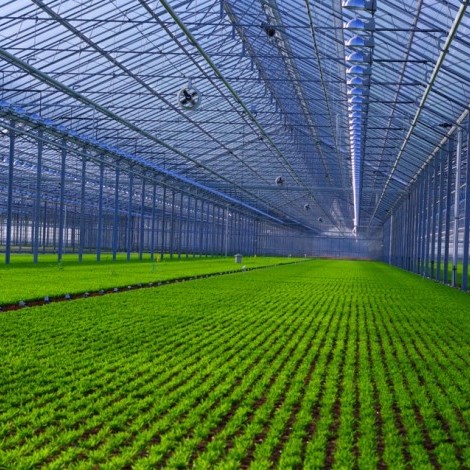
The main goal of automation and intelligent control systems is to achieve safety and security goals, optimize energy consumption, and achieve a quality product, which today can be implemented easily and at the lowest cost with the help of advanced control system technology, intelligentize equipment performance, and add many useful and significant features. In fact, the origin of the idea of implementing automation in greenhouses, gardens, and farms is to prevent the occurrence of risks, injuries, and damages that humans have been unable to deal with for centuries due to problems such as mental preoccupations, lack of opportunity, or even sometimes convenience. Every year, many owners of greenhouses, gardens, and farms are subject to theft or fire, or even the loss of their products and capital Many of the damages are due to an increase or decrease in temperature and humidity, storms and strong winds, improper lighting, gas leaks, theft, etc. All of these cases can be monitored and controlled using the intelligent monitoring and control system of Simorgh Smart Energy Industrial Group to prevent the occurrence of the aforementioned problems and ensure a high-quality and profitable product for the owners of greenhouses, gardens, and farms.
Greenhouse ventilation systems provide fresh air to plants, help control temperature and humidity, and reduce the risk of disease. Greenhouses are generally enclosed structures that are not self-ventilated. To ensure adequate ventilation in a greenhouse, greenhouse owners must use either natural or mechanical ventilation systems.
Natural ventilation: A system that provides ventilation by installing windows on the sides of the greenhouse and the roof of the greenhouse. In this type of ventilation, fresh air enters the greenhouse through the side windows, and warm air, due to its low density, rises and exits through the roof windows.
Mechanized ventilation: In this type of ventilation, air movement is done using a fan; in this way, ventilation fans are placed at the appropriate height around the greenhouse and ventilation operations are performed.
Humidity inside the greenhouse should be controlled in the best possible way, given its role in increasing the quantity and quality of the product and controlling pests and diseases. The best relative humidity in greenhouses is about 75% . Relative humidity less than 60% combined with a temperature greater than 25 degrees Celsius leads to the fall of buds and fruits. If the relative humidity is higher than 75% and the temperature is less than 25 degrees Celsius, fungal diseases increase; therefore, the use of a hygrometer is mandatory.
Heating : Since the greenhouse cannot provide all the heat it needs through sunlight in winter, the greenhouse’s need for heat must be provided in various ways. Heating systems used to heat greenhouses must have features such as: being able to provide the required heat on the coldest night of the year; being able to distribute heat evenly throughout the greenhouse to reduce diseases, promote proper plant growth, and increase their efficiency.
Cooling : Cooling a greenhouse is much more difficult and expensive than heating it In the summer, the air inside the greenhouse is often 11 degrees Celsius and higher than the outside temperature. The harmful effects of high temperatures include: lack of stem strength, reduced flower size, delayed flowering and bud death. Cooling is done to prevent excessive sunlight in the summer. Cooling methods include: shading; painting the greenhouse cover; shading with lime water and the straw and fan evaporation method.
Given the decisive role of light in plant photosynthesis and providing part of the greenhouse temperature, light regulation (intensity, radiation, and type of light source) inside the greenhouse is done by considering the type of crop and the climate of the region. It should be noted that the required light intensity for greenhouse plants is between 10,000 and 70,000 lux, and the use of a light meter (lux meter) in greenhouses is mandatory given the climatic conditions of the region (cloudiness).
The goal of implementing a smart irrigation system is to ensure that all components of the system work continuously and in harmony. In agricultural work, irrigation systems are designed and implemented to provide the water needed by the crop to the plant at a specific time
Most of the time, due to the large amount of work, the greenhouse owner or gardener remains unaware of the failure of some of his systems. One of the advantages of the intelligent control system is the automatic troubleshooting capability, which in the event of a problem, sounds an alarm and notifies the greenhouse owner or gardener of the failure of the hall systems so that they can repair it as
Remote viewing of the hall is an effective factor in examining the condition of greenhouses, gardens, and farms; for example, detecting the growth status of plants or controlling traffic.
Simorgh Smart Energy Company, utilizing the world’s modern methods in designing, consulting, building and smartizing greenhouses , poultry farms and cattle farms , has an experienced staff that can meet all your needs in the field of smartization and bring comfort and convenience. Our every effort is to do the best job for you with the highest quality products. Hereby, Simorgh Smart Group announces its full readiness for smartization in the fields of agriculture, animal husbandry and industry in all parts of Iran with the best quality in design and installation.